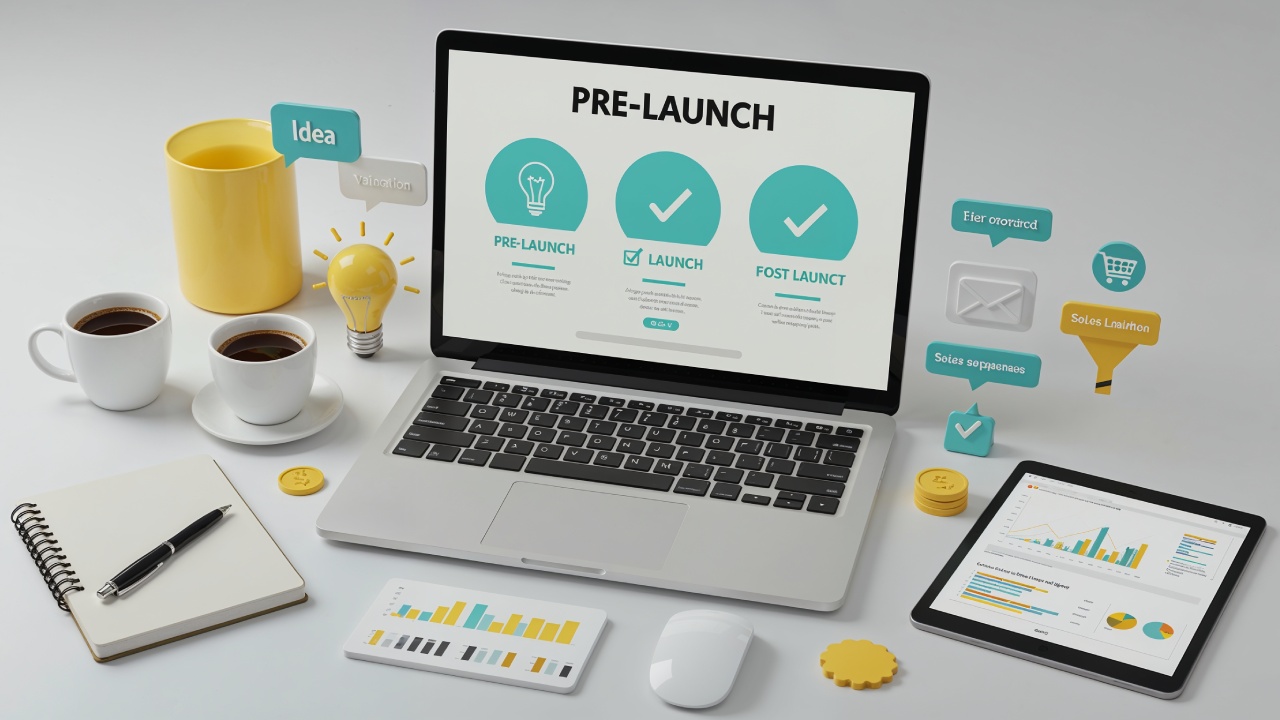Contents
Tools designed to streamline the creation of professional information products can significantly enhance your productivity and output quality. From design software to content management systems, the right resources will empower you to craft engaging and informative materials that resonate with your audience. Understanding the various options available allows you to choose the best fit for your specific project needs and goals. In this post, we will explore vital tools and resources that can help you elevate your information products to a professional standard.
Key Takeaways:
- Utilize a variety of software tools for content creation, design, and distribution to enhance the quality of your information products.
- Leverage templates and frameworks to streamline the production process, ensuring consistency and professionalism across your materials.
- Explore online platforms and resources for marketing and sales to effectively reach your target audience and maximize your product’s visibility.
Understanding Information Products
While you may be aware of various digital offerings, it’s crucial to understand what information products entail. These are content-rich materials designed to educate, inform, or solve a particular problem for your audience. Information products can include eBooks, online courses, webinars, and more, making them a vital part of your digital strategy.
Definition and Types
One of the best ways to categorize information products is by their format and purpose. You can choose from several types, as detailed in the table below:
| Type | Description |
| eBooks | Digital books that provide in-depth information on specific topics. |
| Online Courses | Structured learning experiences, often complete with videos and quizzes. |
| Webinars | Live or recorded seminars that allow interaction with the audience. |
| Membership Sites | Platforms where subscribers pay for exclusive content. |
| Templates and Tools | Resources that aid in organizational or creative tasks. |
- eBooks
- Online Courses
- Webinars
- Membership Sites
- Templates and Tools
After identifying the types, you can select the format that best aligns with your goals and target audience.
Importance in the Digital Age
Before developing your information product, it’s important to grasp its significance in today’s digital landscape. Information products not only allow you to leverage your expertise but also create passive income streams while expanding your reach.
Importance in the digital age cannot be overstated; the demand for knowledge-based resources is continually rising. Your audience seeks concise, valuable content that solves their challenges or enhances their skills. By creating high-quality information products, you position yourself as an authority in your niche, fostering trust and strengthening customer relationships. This increases the potential for repeat business and recommendations, ultimately contributing to your long-term success.
Essential Tools for Content Creation
It is vital to utilize the right tools for content creation to enhance your workflow and elevate the quality of your information products. Whether you’re crafting written material or designing visuals, leveraging specific software can significantly streamline your process and improve your outputs.
Writing and Editing Software
Among the myriad of options available, writing and editing software like Google Docs and Microsoft Word can serve as your primary platforms for drafting and refining your content, offering imperative features such as collaboration, revision history, and formatting tools.
Graphic Design Tools
Behind every successful information product lies effective visual communication, and graphic design tools like Canva and Adobe Illustrator can empower you to create engaging images that resonate with your audience.
Considering the importance of visuals in your information products, investing time in mastering graphic design tools can help you produce eye-catching graphics, infographics, and presentations that reinforce your message. Platforms like Canva offer user-friendly templates, while Adobe Illustrator provides advanced features for intricate designs. Both can enhance the overall appeal of your content, making it more likely to capture and retain your audience’s attention.
Resources for Research and Development
For creating professional information products, leveraging resources for research and development is key. These resources equip you with insights into your target audience, market trends, and the competitive landscape, allowing you to tailor your products to meet the specific needs of your customers.
Market Research Tools
Research tools like SurveyMonkey and Google Trends enable you to gather valuable data about your audience’s preferences and habits. By utilizing these tools, you can identify gaps in the market and assess the demand for your information products, ensuring that your offerings resonate with your potential customers.
Content Curation Platforms
At the forefront of efficient content development, content curation platforms help you gather and organize relevant information from various sources. Using platforms like Feedly or Pocket enables you to stay updated on trends while saving time on information gathering.
Content curation not only enhances your research process but also enriches your product’s value. By curating high-quality content, you can provide your audience with comprehensive insights, making your information product more authoritative. Additionally, curated content can serve as inspiration for your own writing, helping you to better articulate your ideas and solidify your position as an expert in your niche.
Formatting and Publishing Options
Not all formatting and publishing options are created equal; understanding them can elevate your information product’s professionalism. Explore the 5 Infoproducts General Tools For Your Online Business to uncover various platforms and tools that make this process easier.
E-book and Print Formatting Tools
By utilizing specialized formatting tools, you can ensure your e-books and print products have a polished appearance that resonates with your audience. Tools like Scrivener and Adobe InDesign can help you create beautifully organized documents, while platforms like Canva offer user-friendly design options to enhance your visual branding.
Self-Publishing Platforms
Tools for self-publishing have transformed the way you can bring your information products to market. With platforms like Amazon Kindle Direct Publishing, Smashwords, or Lulu, you can easily publish your e-books and prints without the traditional hurdles of publishing houses.
Further, these self-publishing options allow you to retain control over your work and profits, letting you set your pricing and royalties. Each platform has unique features, such as distribution networks and marketing tools, helping you reach your target audience effectively. Whether you choose to publish digitally or in print, these self-publishing platforms provide the flexibility and support necessary for successful product launches.
Marketing and Promotion Strategies
Keep your audience engaged and expand your reach by employing various marketing and promotion strategies. You can find a wealth of resources for crafting effective content by checking out the 22 Best Content Creation Tools for Creators. Mix these tools with well-thought-out marketing strategies to enhance your professional information products’ visibility and conversion rates.
Social Media Tools
With the right social media tools, you can streamline your promotional efforts and connect with your target audience efficiently. Platforms such as Hootsuite and Buffer allow you to manage your content across various networks, schedule posts, and analyze engagement metrics. By utilizing these tools, you can ensure your marketing messages reach the right people at the optimal times.
Email Marketing Resources
Among the most effective ways to engage your audience is through email marketing resources. Email platforms like Mailchimp and ConvertKit offer user-friendly interfaces and customizable templates that help you design attractive campaigns. These resources enable you to segment your audience, track engagement metrics, and automate follow-ups, leading to increased customer retention and sales.
Tools such as A/B testing and personalized email campaigns allow you to maximize your email marketing efforts. Focus on building a solid email list by offering value through lead magnets and incentives. As you analyze performance metrics, adjust your strategies to ensure your emails resonate with your audience, driving engagement and conversions for your information products.
Continuous Improvement and Feedback
Despite your best efforts in creating an engaging information product, there’s always room for growth. Embracing the philosophy of continuous improvement allows you to incorporate changes based on real user experiences. Regularly seeking feedback not only enhances your product but also strengthens your relationship with your audience, increasing their likelihood of becoming repeat customers.
Gathering User Feedback
Continuous feedback collection is necessary for tailoring your offerings to meet user needs. Utilizing surveys, interviews, and feedback forms can yield valuable insights into how your audience perceives your product and what enhancements they desire. Engaging with your users enables you to uncover bugs, usability issues, and opportunities for additional content or features, ensuring your product evolves with your audience’s expectations.
Analyzing Product Performance
Feedback analysis is a powerful tool for understanding your product’s success. By closely examining user interactions, completion rates, and drop-off points, you can identify patterns that inform your next steps. Comprehensive performance metrics reveal not only what works well but also highlight areas needing refinement, enabling you to iterate more effectively and deliver an even better product.
The process of analyzing product performance goes beyond simply reviewing user feedback; it involves digging deep into data analytics to gauge engagement. By using tools like Google Analytics or custom tracking, you can obtain insights into user behavior and preferences. Monitoring key performance indicators will show you which aspects resonate with your audience and which need enhancement. This data-driven approach allows you to make informed decisions, focusing on continuous enhancement of your information product while maintaining alignment with user expectations.
To wrap up
Taking this into account, leveraging the right tools and resources can significantly enhance the quality of your professional information products. By utilizing software for design, project management, and marketing, you can streamline your workflow and present your ideas effectively. Additionally, tapping into online platforms and communities can provide you with valuable insights and support. As you explore different options, focus on what aligns best with your goals to create impactful materials that resonate with your audience.








